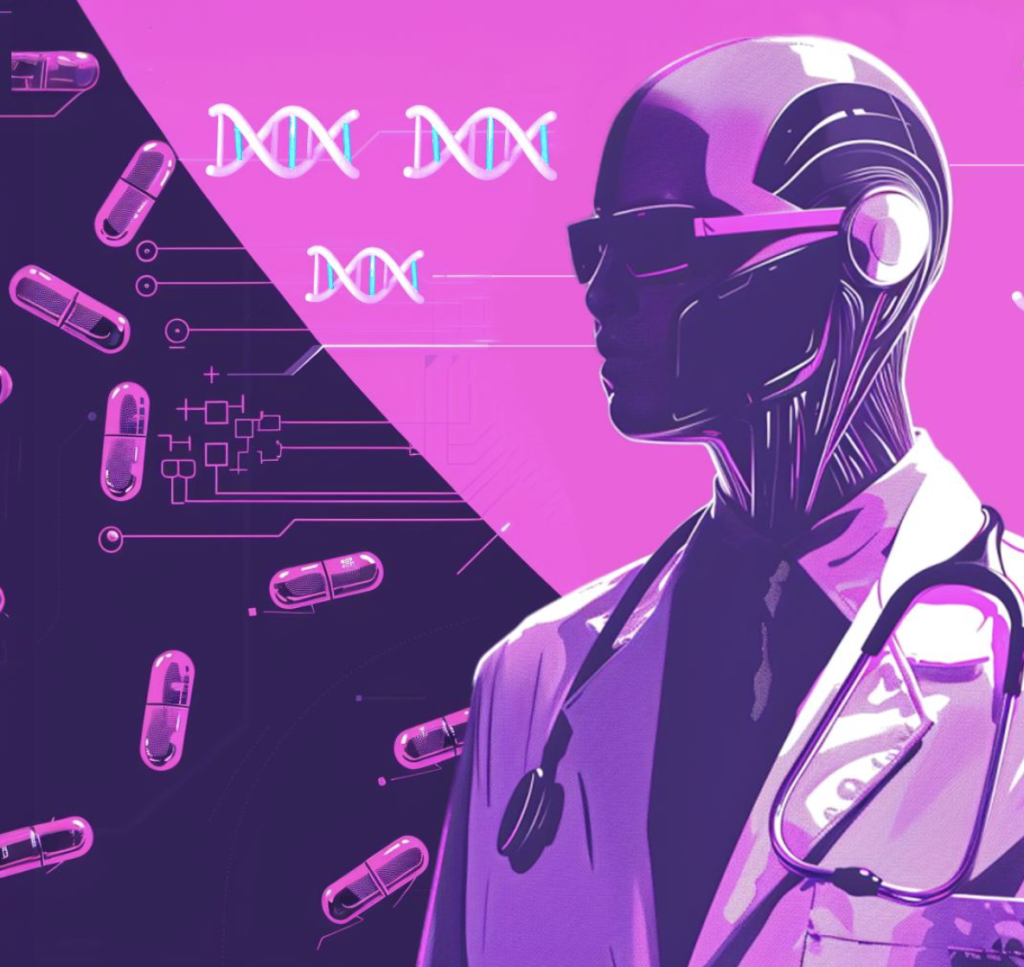Introduction: Balancing the Benefits and Risks of GenAI in Medicine
“Not all GenAI is safe, and in healthcare, the risks are particularly high,” said Aashima Gupta, Google Cloud’s Global Director of Healthcare Strategy and Solutions (Smith, 2023). This statement echoes my recent experience using a healthcare chatbot for a medical issue, highlighting the need to approach this technology with caution while recognizing its potential to transform patient care and alleviate the burden on medical professionals.

My Experience: Leveraging AI for Minor Symptoms
Recently, I found myself grappling with persistent bloating, nausea, and stomach discomfort. As the symptoms were not severe enough to warrant an immediate hospital visit, I reached out to my friend, a clinical medicine student, for advice. Intrigued by the potential of AI in healthcare, my friend decided to input my symptoms into several healthcare chatbots to see what insights they could provide. After analyzing the data, the chatbots recommended a specific medication to alleviate my symptoms. My friend, trusting the AI’s judgment, prescribed the medicine to me. However, in a surprising turn of events, my symptoms resolved on their own before I could even purchase the medication. While I was relieved to feel better, I couldn’t help but wonder about the accuracy of the chatbots’ diagnosis and whether I would have actually needed the prescribed treatment.

The Advantages of Conversational AI in Healthcare
Despite the potential risks, the emergence of Conversational AI in Healthcare offers several benefits. Firstly, it lowers the barrier for people seeking medical advice, making it more accessible and convenient. Secondly, it can help alleviate the immense pressure on doctors. My friend revealed that in China, doctors often work late into the night, which is a common occurrence. By handling minor cases and providing initial guidance, healthcare chatbots can reduce the workload of medical professionals, allowing them to focus on more critical cases.
Market Landscape: The Current State and Future of Healthcare Chatbots
The global healthcare chatbots market is expected to reach $703.2 million by 2025, growing at a CAGR of 21.5% from 2020 to 2025 (Grand View Research, 2020). This growth is driven by the increasing demand for accessible medical information, the need to reduce healthcare costs, and the growing adoption of smartphones and mobile applications. However, the market faces challenges such as concerns over data privacy, the need for regulatory compliance, and the potential for misdiagnosis or incorrect treatment recommendations (Deloitte, 2019).
Looking ahead, to maximize the benefits of healthcare chatbots while minimizing risks, it is essential to implement strict regulations and oversight to ensure the accuracy of diagnoses and recommendations. These AI systems should prioritize patient safety and provide clear guidance on when a hospital visit is necessary. As the technology continues to advance, collaboration among medical experts, researchers, and policymakers is crucial to develop ethical guidelines and best practices for the use of GenAI in healthcare (World Health Organization, 2022).
References:
Deloitte. (2019). The future of AI in healthcare: Challenges and opportunities. Deloitte Insights.
Grand View Research. (2020). Healthcare chatbots market size, share & trends analysis report by application, by end-use, by region, and segment forecasts, 2020-2025. Grand View Research.
Smith, J. (2023). Google Cloud’s Aashima Gupta on the future of AI in healthcare. HealthTech Magazine.
World Health Organization. (2022). Ethics and governance of artificial intelligence for health: WHO guidance. World Health Organization.

This post really resonates with me, especially the part about using AI for minor health concerns. I had a similar experience a few months ago when I used a health app to check some persistent headaches I was having. The chatbot suggested I might be dehydrated or lacking sleep, which made sense, but it also flagged some more serious conditions that honestly made me a bit anxious. I ended up talking to a doctor anyway, who confirmed it was nothing serious, but it made me realize how easily AI could lead to unnecessary worry or even over-treatment.
At the same time, I can definitely see the upside of AI in healthcare, especially for things like reducing the load on doctors. It’s crazy to think about how stretched they are, and if AI can take care of the simpler cases, it might be a game-changer. But like you said, there’s a fine line between helpful guidance and something potentially harmful. I feel like we’re still figuring out where that line is, and it’s good to see discussions about making sure AI is held to high safety standards. It’s an exciting space, but I definitely agree that caution is key!